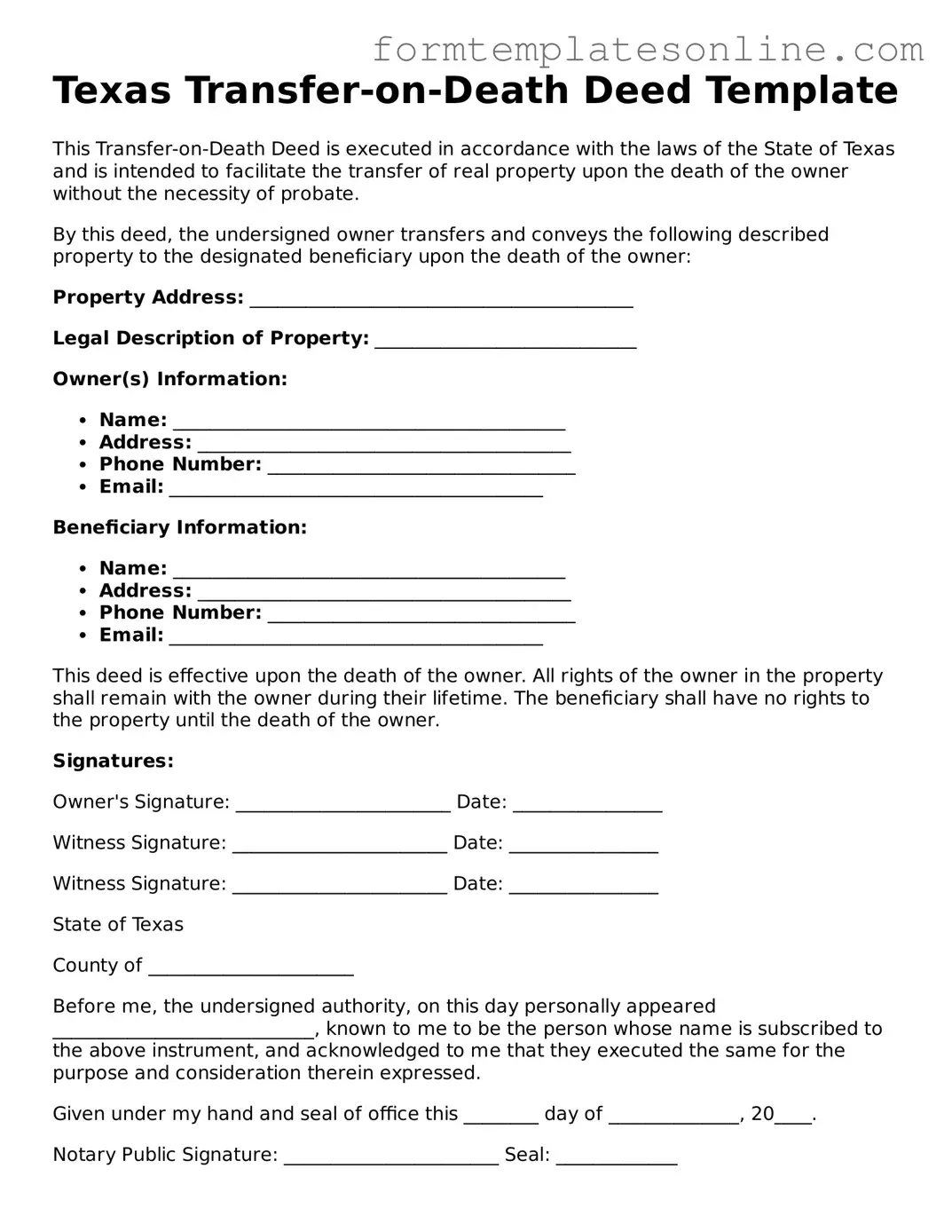What is a Texas Transfer-on-Death Deed?
A Texas Transfer-on-Death Deed is a legal document that allows a property owner to designate a beneficiary who will receive the property upon the owner’s death. This deed ensures that the property does not go through probate, simplifying the transfer process for the beneficiary.
Who can create a Transfer-on-Death Deed in Texas?
Any individual who is the owner of real property in Texas can create a Transfer-on-Death Deed. The owner must be at least 18 years old and of sound mind. Joint owners can also use this deed to designate beneficiaries for their respective interests in the property.
What information is required to complete the deed?
To complete a Transfer-on-Death Deed, the property owner must provide the legal description of the property, the name and address of the beneficiary, and the owner’s signature. It is also important to include the date of execution and have the deed notarized for it to be valid.
How does a Transfer-on-Death Deed affect the property during the owner’s lifetime?
The property remains under the owner’s control during their lifetime. The owner can sell, lease, or mortgage the property without any restrictions. The beneficiary has no rights to the property until the owner passes away.
Can a Transfer-on-Death Deed be revoked?
Yes, a Transfer-on-Death Deed can be revoked at any time before the owner's death. This can be done by executing a new deed that explicitly revokes the previous one or by recording a written revocation with the county clerk's office where the original deed was filed.
What happens if the beneficiary predeceases the owner?
If the designated beneficiary passes away before the property owner, the Transfer-on-Death Deed becomes void. The owner may then choose to designate a new beneficiary or let the property pass according to their will or state intestacy laws.
Is it necessary to file the Transfer-on-Death Deed with the county?
Yes, the Transfer-on-Death Deed must be filed with the county clerk's office where the property is located. It should be recorded before the owner's death to ensure that the beneficiary can inherit the property without going through probate.
Are there any tax implications associated with a Transfer-on-Death Deed?
Generally, there are no immediate tax implications for the owner when creating a Transfer-on-Death Deed. However, the beneficiary may be subject to property taxes and other assessments once they inherit the property. It is advisable to consult with a tax professional for specific guidance.
Can a Transfer-on-Death Deed be used for all types of property?
A Transfer-on-Death Deed can be used for residential and commercial real estate, but it cannot be used for personal property like vehicles or bank accounts. It is specifically designed for real property ownership and must meet Texas legal requirements to be valid.
